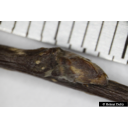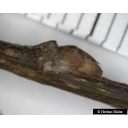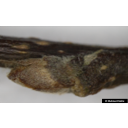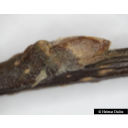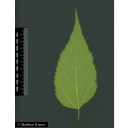Useful information about the taxon (species, subspecies, variety...)
Celtis occidentalis L. 1753
Cannabaceae
(APG IV)common hackberry, bastard elm
Taxon concept: The Plant List (2014), version 1.1
Distribution: eastern Canada; United States: northeast, northeast-central, northern and southern States of the Great Plains, southeast
Size: 15 - 35 (m)
Flowering period: IV - V
Celtis occidentalis L. - Accepted: Celtis occidentalis L. bei Zander 2008; Familie: Ulmaceae (Zander 2008)Celtis occidentalis L. - Accepted: Celtis occidentalis L. bei The Plant List (2010); Familie: Cannabaceae (APG III)Celtis occidentalis L. - Accepted: Celtis occidentalis L. bei The Plant List (2014), version 1.1; Familie: Ulmaceae (APG III)Celtis occidentalis L. - Accepted: Celtis occidentalis L. bei The Plant List (2010); Familie: Cannabaceae (APG IV)Celtis occidentalis L. - Accepted: Celtis occidentalis L. bei BfN Checklist Flora DE; Familie: Cannabaceae (APG IV)
- Flowers
- mostly monoecious (polygamomonoecious)
- Flower ecology
- wind-pollinated (anemophilous)
- Life form
- woody, tree
- Leaves
- alternately arranged, margin serrate, leaf lamina about twice as long as broad, asymmetric leaf shape, leaf venation pinnate to acrodromous (3 basal veins)
- Foliage persistence
- deciduous
- Fruits
- single-seeded drupe, 8-11 mm in diameter
- Fruit ecology
- gravity-dispersed (barochorous) and animal-dispersed (zoochorous) (birds, mammals, reptiles)
- Soil conditions
- preferentially on moist, nutrient-rich, well-drained soils, otherwise on a wide range of soil conditions
- Root type
- deep rooted
- Succession type
- early-seral and climax species
- Natural occurrence (habitat)
- gallery forests, floodplains, bottomland forests along rivers and streams, ravines, oak-hickory forests, open woodlands, rocky hillsides, limestone outcrops, old fields, sand barrens
- Vegetation typ and synecology (plant community)
- temperate forests; e.g. in sugar maple-basswood communities
- Natural propagation (all types)
- vegetative reproduction by root crown sprouting and adventitious buds
- Constraints according moisture
- somewhat drought tolerant
- Constraints according habitat
- flood tolerant, not occuring on windswept sides
- Life span
- 150-200 years
- Usage
- edible fruits
- Phytopathogenic organisms
- is sensitive to gall mites
- Bark
- thick, deeply furrowed with warty cork projections
eFloras (2008): Flora of China. Published on the Internet http://www.efloras.org.; Lauber, K. et al. (2018): Laburnum alpinum. In: Flora Helvetica. Haupt Verlag. Available at: Info Flora (2004-2019). See: https://www.infoflora.ch/de/flora/laburnum-alpinum.html; The International Plant Names Index (2009). Published on the Internet http://www.ipni.org; Courtesy to IPNI, 2009. Exported from IPNI at date: 2009-09-22 20:17:51; The IUCN Red List of Threatened Species. www.iucnredlist.org;
Diese Webseite verwendet Google Maps, um Karten und Standorte von Pflanzen in den Hohenheimer Gärten anzuzeigen. Dadurch werden unter Umständen Daten an Google weitergeleitet, was mit einer Verarbeitung Ihrer personenbezogenen Daten verbunden sein kann. Die Datenschutzerklärung von Google finden Sie hier: Datenschutzerklärung von Google
| Sex | Standort | Accession number | Planting year | Donation | IPEN | Lat. | Long. |
|---|---|---|---|---|---|---|---|
| Parzelle L | EG-L-061-21074 | 1956 | XX-0-HOH-EG-L-061-21074 | 48,7079047323 | 9,2083000517 | ||
| Parzelle P | EG-P-045-21075 | 1920 | XX-0-HOH-EG-P-045-21075 | 48,7073717698 | 9,2101843793 | ||
| Parzelle D | SP-DB-038-5919 | 1866 | XX-0-HOH-SP-DB-038-5919 | 48,7109321706 | 9,2123437186 | ||
| Parzelle E | SP-EB-049-9976 | 2015 | XX-0-HOH-SP-EB-049-9976 | 48,7109124544 | 9,2119555206 |

